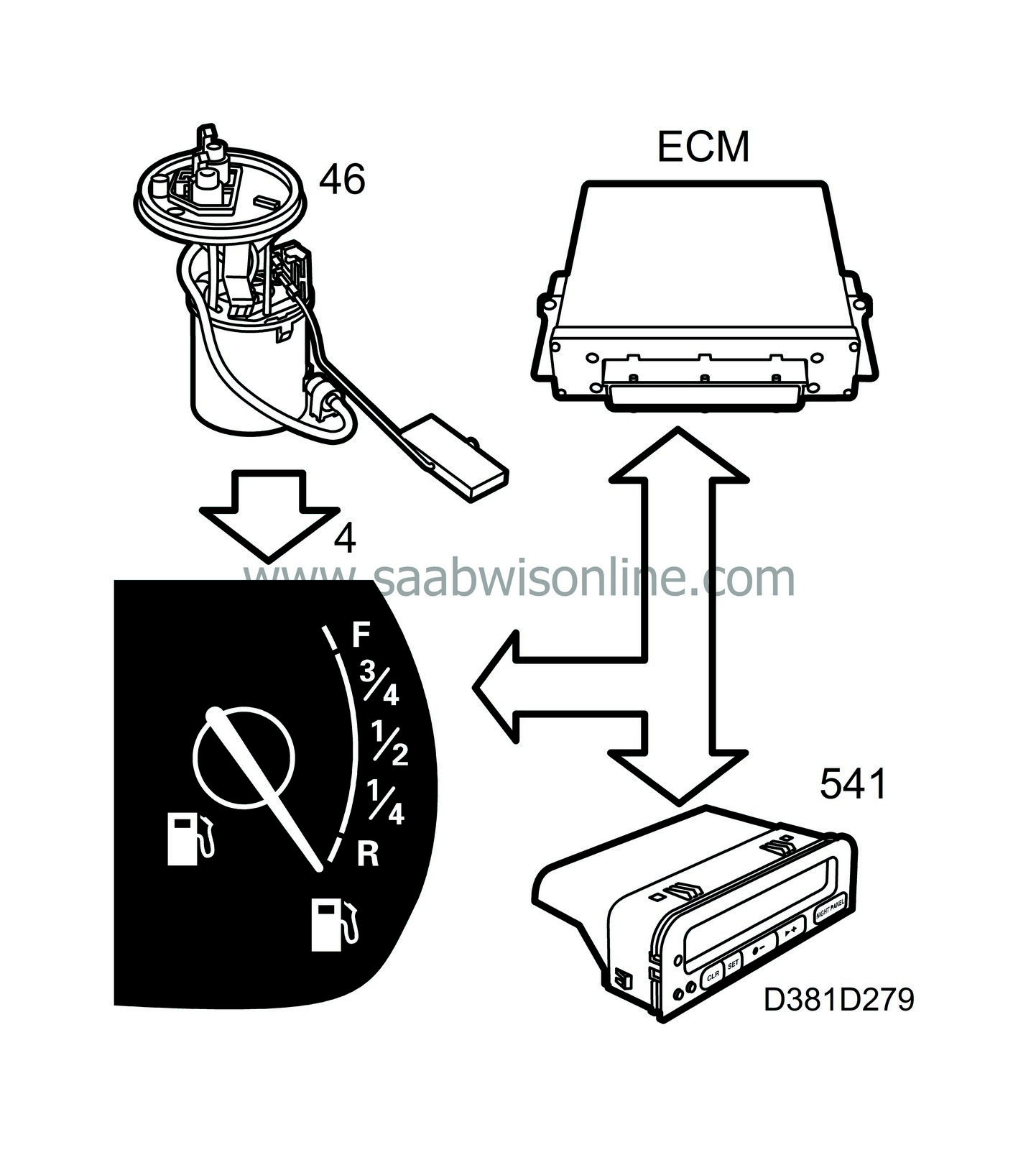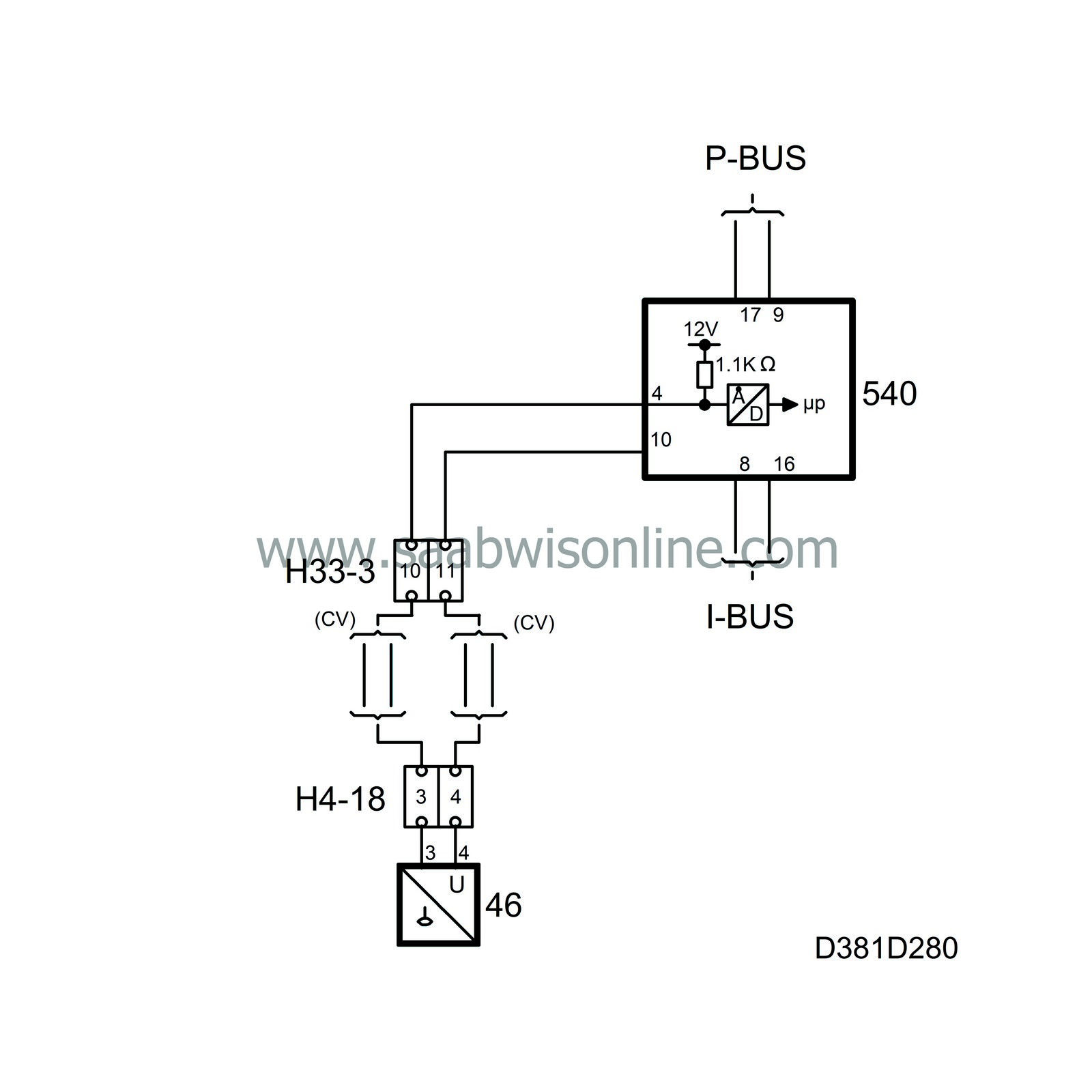Fuel gauge
| Fuel gauge |
The fuel gauge shows the driver how much fuel is left in the tank. It comprises a fuel gauge in the main instrument unit and a level sensor in the tank.


The level sensor has a variable resistance, the value of which corresponds to the level of the sensor float in the tank. The resistance will increase with the fuel level.
The sensor is connected to the main instrument control module pin 4, from which it is supplied with B+, and it is grounded to pin 10.
The control module detects the resistance of the sensor and controls the voltage pulses to the fuel gauge so that the gauge needle position corresponds with the resistance of the sensor.
In order to provide a more exact reading when there is only a little fuel in the tank, the main instrument unit control module will switch to measuring the fuel consumption when the amount of fuel in the tank is below 10 litres.
The main instrument unit control module sends information on the fuel level to the buses.
Diagnostics
An open circuit/short circuit sets diagnostic trouble code B1720. The gauge needle indicates 0 litres and the fuel reserve indicator lamp lights up.| Fuel reserve indicator lamp |
When the contents of the fuel tank are down to about 10 litres, the low fuel level lamp comes on. This lamp is supplied with current in the main instrument unit and when it should light up it is grounded by the main instrument unit's control module.
The main instrument unit lights this lamp for 3 seconds when the ignition is switched on.
| Fuel consumption |
The engine control module sends information on the fuel consumption to the bus.
The main instrument unit control module uses the information to control the fuel gauge (under 10 litres).


